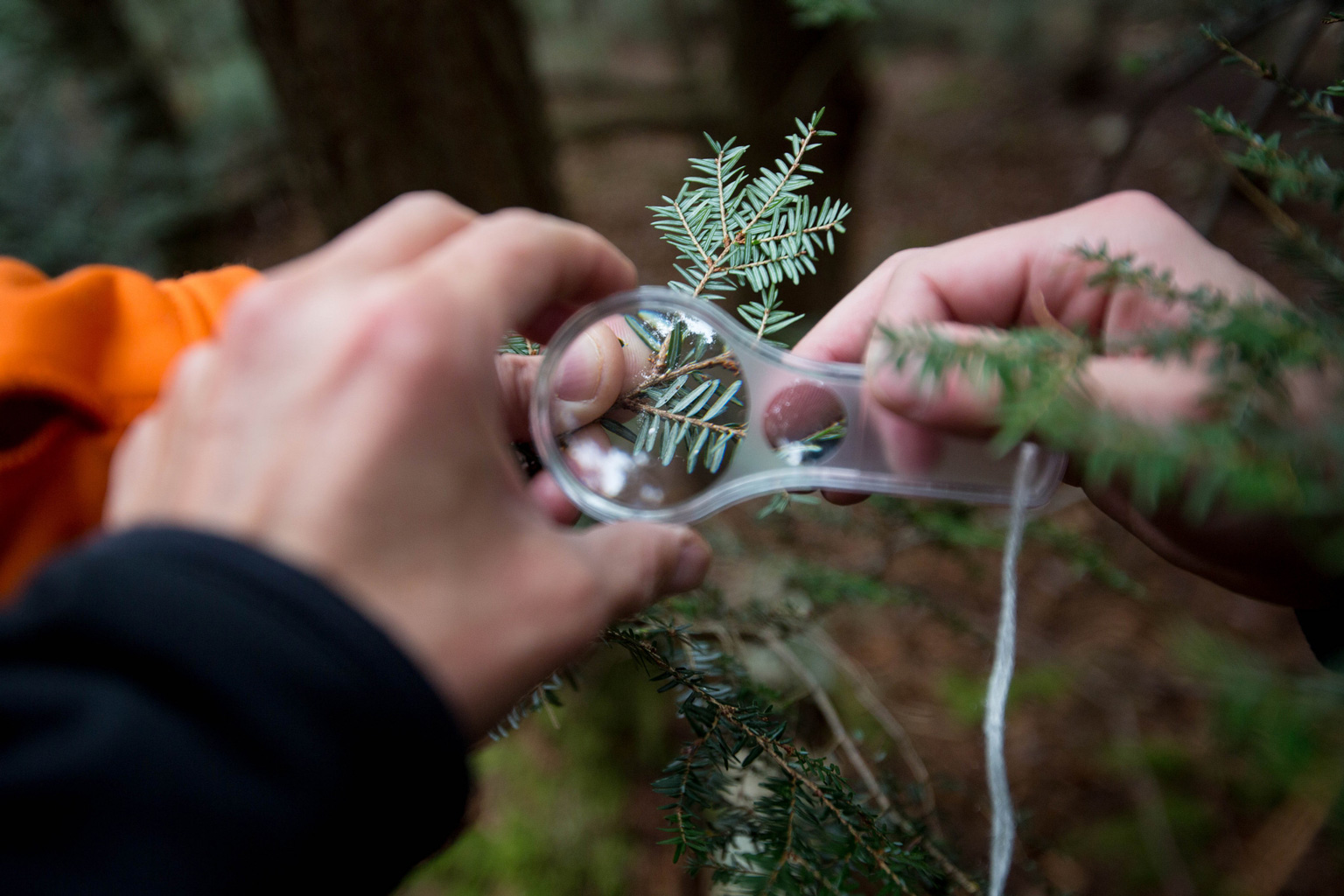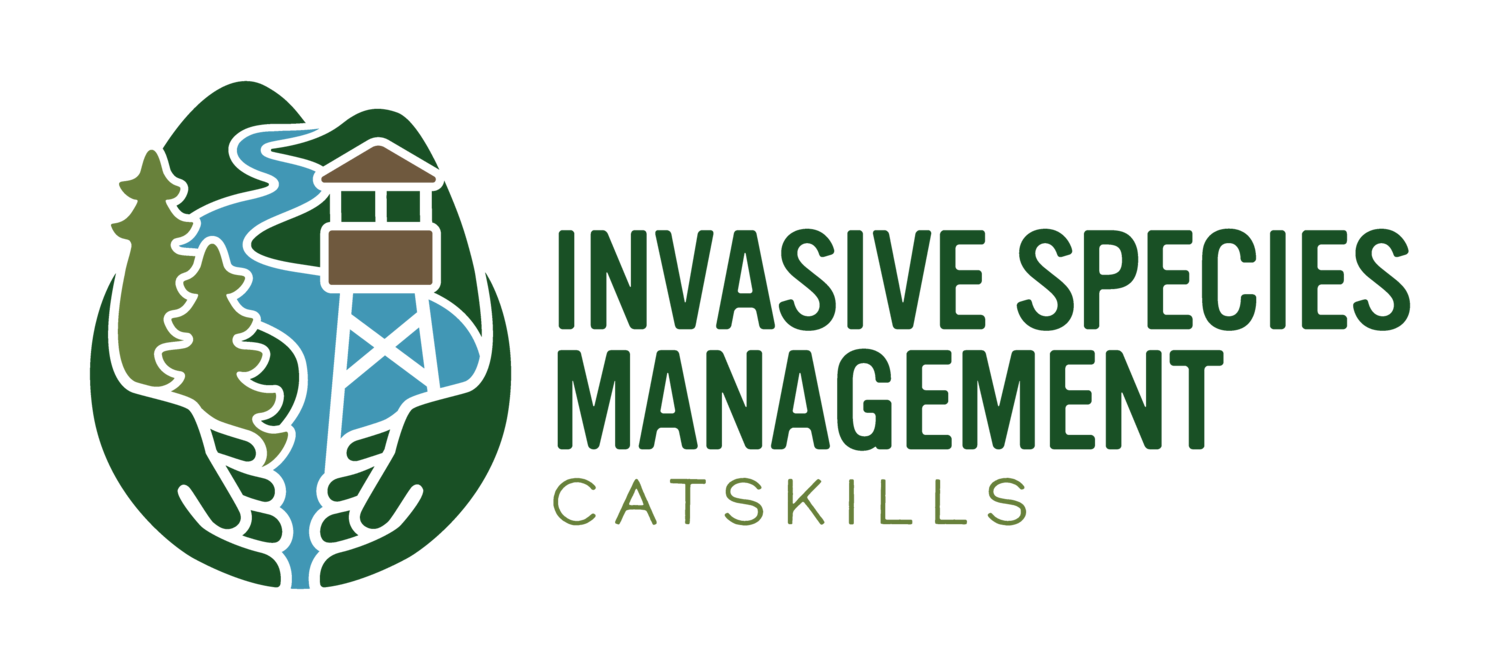
CRISP's resources are geared towards dealing with Early Detection Rapid Response invasive species, as well as certain forest pests (e.g. Hemlock Woolly Adelgid). At this time, CRISP rarely assists in the eradication of some highly abundant invasives--such as multiflora rose--but our staff is more than happy to consult with individuals regarding identification of and control methods available for these species. CRISP Engagement Policy is here
Send any questions regarding invasive species that threaten the Catskills region to:
invasives@catskillcenter.org or call (845) 586-2611 x 120
Neversink Gorge, Wolf Brook Multiple Use Area
The Future of CRISP
The Catskill Regional Invasive Species Partnership (CRISP) and the New York City Department of Environmental Protection (DEP) collaborated on a strategic planning project between December 2021 and March 2022 to gather stakeholder input on invasive species management priorities in the CRISP region. A concept mapping process was utilized, which is a structured research methodology that generates insights into the perspectives and priorities that exist among stakeholders. The process provided insights into the makeup of the stakeholder group, the invasive species topics they see as priorities, how the priorities compare in terms of importance and feasibility, and who the participants feel should take the lead on implementing each priority.
The 73 participants self-categorized by role, employer / affiliation, the primary habitat they work in, and engagement with invasive species work in the region. They identified 88 priorities by completing the prompt, “One specific invasive species priority in the CRISP Region over the next five-years is…” Twenty-nine priorities were rated above average in importance and feasibility and are listed in the Results section of the report. The participants then sorted all of the statements into groups and analysis revealed four clusters, including NYC DEP, NYS DEC, CRISP, and a collaborative cluster. The results discussed in the report and the data included in the Appendices can be used as a consensus-driven pipeline of prioritized projects for each organization and their collaborators.
CRISP StrateGic Plan 2018-2022
Executive Summary
The Catskill Center for Conservation and Development hosts the Catskill Regional Invasive Species Partnership (CRISP) and is working with partners to address invasive species issues in the greater Catskills region. CRISP, established in 2007, is one of eight Partnerships for Regional Invasive Species Management (PRISM) in New York State. The Catskills are an important destination for recreation and tourism. Outdoor recreational activities, such as hiking, fishing, and skiing. attract nearly 2.5 million visitors per year to the Catskills, contributing $115 million to the economy . New York State recognizes that invasive species threaten New York State’s biodiversity, economy and human health and defines invasive species as “a species that is non-native to the ecosystem under consideration and whose introduction causes or is likely to cause economic or environmental harm or harm to human health” (New York State Environmental Conservation Law Title 17, Article 9, 2008). Invasive species also contribute to habitat degradation and loss of wildlife and plant species, a decrease in recreational opportunities, agricultural costs and impacts to people’s wellness and livelihood (National Invasive Species Council. 2016. Management Plan: 2016–2018. Washington, DC).
CRISP’s Vision is to protect the ecological integrity, water resources, recreational values and the economy from the devastating impacts of invasive species, working across a diverse landscape with both public and private landowners.
CRISP’s Mission is to promote education, prevention, early detection and control of invasive species to limit their impact on the ecosystems and economies of the Catskills.
Participatory methods based on behavioral science best practices, were used to gather and process data for the CRISP strategic plan so that the perspectives of all stakeholders including partners, support network organization representatives, donors, state government officials, relevant technical sectors and communities can be integrated into the plan. Twenty-five individual key interviews and twelve focus group discussions were conducted throughout the entire Catskills Region and the resulting data was collated and analyzed to produce the following strategic objectives:
CRISP will take the lead in convening a group of agencies and organizations involved in addressing invasive species issues to develop and overarching invasive species management plan for the Catskills Region that combines the resources from all the involved agencies.
The CRISP Steering Committee will aim to enhance the profile and impact of the CRISP partnership through public activities.
CRISP will increase the number of working groups to provide technical advice and support to the Coordinator.
CRISP will develop and adopt the use of a simple monitoring, evaluation and learning system
CRISP will aim to recruit and retain an increased number of volunteers each year.
CRISP will increase capacity to perform Early Detection Rapid Response
CRISP will train more stakeholders in best management control practices and to provide funding and/or training for land and property owners in underserved areas to treat high priority species themselves.
CRISP will build its capacity in site restoration.
CRISP will develop a strategy to increase its capacity to conduct education and outreach activities.
CRISP will develop outreach materials and activities that target specific groups and areas and that present the negative impacts of IS and emphasizes the benefits of addressing these impacts.
CRISP will develop outreach materials that present the negative impacts of IS while emphasizing the benefits of addressing these impacts.
CRISP will continue to partner with agencies and an augmented number of universities in research activities. and that present the negative impacts of IS and emphasizes the benefits of addressing these impacts.
Lesser Celandine (Ficaria verna spp. verna) at Thorn Preserve, Woodstock
Download Our Strategic Plan
CRISP 2018-2022 Strategic Plan
Giant Hogweed Control Team 2018
Hemlock Conservation Strategy
Credit: http://pawilds.com
Regional Vision for Hemlock on the Landscape:
Hemlock cathedral forests distributed across the landscape that provide quality habitat, important natural benefits, and provide an essential cultural resource.
Current situation and project overview:
Within the Catskill Regional Invasive Species Partnership region hemlock dominated stands comprised ~ 10% of forest and have unique ecosystem functions. . Hemlock Woolly Adelgid (Adelgis tsugae), a small aphidlike insect native to Asia, threatens the persistence of hemlock in the Catskills and was originally detected in the Catskills in the late 1980s and has since spread through many hemlock stands across the region. Hemlock Woolly Adelgid feeding damages the canopy of the host tree and causes eventual mortality. Hemlock Woolly Adelgid is regarded as the greatest threat to hemlock forests in the region, and has been found to infest most surveyed hemlock stands in the Catskill Mountains. Another important hemlock pest, Elongate Hemlock Scale (Fiorinia externa), has been documented as widespread in the eastern Catskills. To date, half of 35 surveyed hemlock stands were in “moderately severe to severe decline.”
Goals:
1. Protect and maintain genetic diversity of hemlocks across the landscape over the long-term.
2. Protect hemlock forests that provide important cultural and economic value, including historical, recreational, educational, and environmental benefits.
3. Preserve and protect hemlock stands in locations with cold water streams and brook trout habitat.

Credit: http://www.capeandislands.org
Early Detection Network and Outreach
In partnership with Cornell Cooperative Extension of Green County, CRISP has developed an early detection network of trained Master Gardener volunteers and Cornell Cooperative Extension staff in each county in our region to act as the first line of defense for early detections of new invasive species.
Credit: https://wildkratts.fandom.com/
Asian Longhorned Beetle Public Outreach
CRISP is working with Vibrant Creative to develop a multi-media campaign to reach a broad audience with the message “Don’t Move Firewood” and information on how to identify the beetle and its symptoms.







